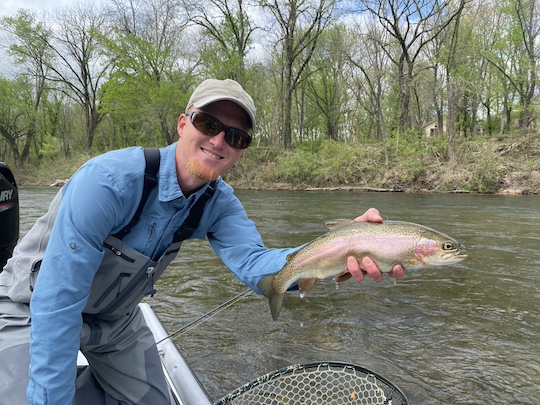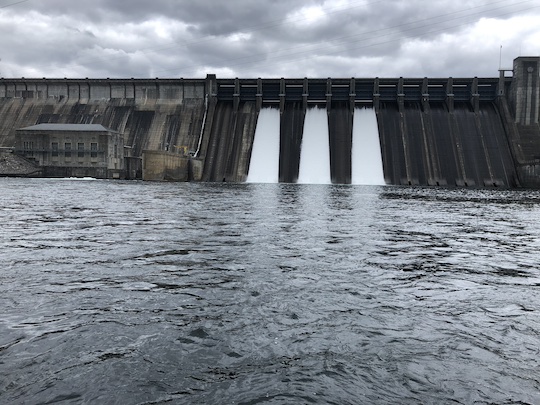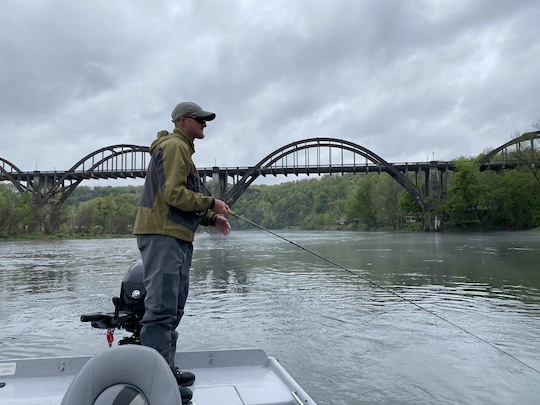Here in Tennessee, TWRA will solicit comments through from hunters and anglers about the regulations they would like to see implemented. Right now, that is happening through mid September for fishing regulations for the 2025-2026 years. While I generally have little hope of any serious changes happening that will result in improvements in our fisheries, there is always a chance.
I have written in and made several recommendations. Here are some of my ideas along with commentary on why it would be useful.
First, all of my comments revolve around trout fishing primarily, but the general principles will apply to other fisheries as well if that is what you care about. A little background is important to understand my perspective.
I have been fly fishing for somewhere close to 30 years and fishing the Caney Fork for probably 25 or more of those years. When I first started fishing the Caney Fork River, it was before Center Hill Dam was "repaired" for leakage and the continuous minimum flow was stupendous. The biggest thing that the minimum flow did, other than keep cold oxygenated water in the river, was to make it harder for people to access every nook and cranny in the river. In other words, the fish had plenty of places they could hide to avoid the heaviest fishing pressure.
Fast forward to now, and not only is the minimum flow lower than it was then (despite whatever the Corps of Engineers claims) but the number of anglers and other river users has sky rocketed. That's not all bad, but it has been hard on the trout fishery. While many anglers pursue catch and release, there are also many people who choose to harvest their catch, some legally and others without regard for the regulations. That last bit is a separate issue, but the main point here is that more fish than ever are leaving the river.
As long as I've been fishing the Caney Fork, it has been more cyclic than any other water that I fish. Some of that is driven by weather and environmental factors, but a huge component is simply fishing pressure. It goes something like this. Each cycle begins with the river fishing poorly. Word gets out that fishing on the Caney is terrible, and people quit wasting their time and money to come and fish it. For the next 2-4 years, the fishery gradually improves as more and more fish are able to hold over due to one simple factor: they are being left in the river. Unfortunately, word eventually gets out that the Caney Fork is back and fishing is on fire. All the anglers who want to catch and keep their limit return in force. Soon, everyone is talking about how it is like the good old days. Plenty of fish including lots of nice ones are being caught. However, the river can only lose so many fish before the fishery yet once again collapses and the cycle continues.
Right now, we have special regulations on the Caney Fork River. Those regulations allow for only one fish over 20" a day to be harvested. I've seen anglers with stringers of big trout, so enforcement would help a lot, but that is not the only problem. The fact that fish over 20" can be harvested means that there are very few fish over 20" in the river. Brown trout have to be a minimum of 24" and you can only harvest one per day. What does that mean? As soon as browns hit that 24" mark, they are usually harvested. If not right at 24", almost always within just 2-3 inches of that mark. Thus, while the Caney Fork could be absolutely full of big trout, they get harvested right about the time they are getting to a truly special size and you can forget about many ever getting to truly impressive dimensions.
This brings me to my first recommendation. I would like to see a 30" minimum size for brown trout regulation enacted on both the Caney Fork River and the Clinch River. Both rivers are capable of growing big brown trout about as fast as one could hope for. While it is great that we have reasonably decent numbers of smaller brown trout on the Caney Fork, I am far more interested in catching browns over 24" than I am in catching brown trout under 24". Imagine, if you will, a river where catching brown trout over 24" is almost a given. That is what the Caney Fork could be. However, it not only needs to be protected through vigorous enforcement, but also with special regulations.
Both the Caney Fork and Clinch have the same problem with rainbow trout. Both rivers have a 14"-20" protected length range (PLR). Fish in the PLR must be immediately released. That means that both rivers have some nice fish between 14" and 20", but as soon as fish hit 20" they are harvested. I would propose expanding at least the top end of the PLR to 24" and it wouldn't hurt my feelings to expand the bottom end on the Clinch.
Speaking of the Clinch River, as it is now acknowledged as a wild rainbow trout fishery, albeit a somewhat fragile one, it needs a significant overhaul on regulations. First, the daily 7 fish limit needs to be significantly reduced. I would suggest a two fish a day limit if we can't just have a catch and release river. Furthermore, I would suggest making everything from the bottom of Miller Island upstream to the weir dam a catch and release zone. While unlikely to be implemented, catch and release zones are crucial to protecting spawning fish. For examples, look to some of the best trout waters in the country which have seasonal catch and release zones or even total closures (which I could support as well if it can be determined when most of the spawning success happens). There is a reason why everyone wants to go fish the White River in Arkansas, and the quality fishery is largely driven by special regulations, catch and release zones, and seasonal closures.
Finally, at a minimum, the Clinch needs to have a seasonal fishing closure from just above (say 50 yards upstream) the mouth of Clear Creek extending down to the weir. There are a variety of reasons why this section is so crucial, but it all revolves around spawning class fish. The water above the weir dam often has major water quality issues with low dissolved oxygen in the late summer and early fall. Clear Creek contributes water with very high dissolved oxygen (DO) and fish spawn in Clear Creek as well. Thus, just prior to spawning, spawning fish will stack up in the high DO water coming out of Clear Creek. Unfortunately, a lot of people know this and catch these spawners and put them on stringers. Right now, that is completely legal albeit not ethical. Changing the regulations to protect these fish will go a long ways towards rebuilding the wild rainbow trout fishery on this river to what we saw 5-10 years ago.
If you are interested in seeing better fisheries here in Tennessee, then reach out to TWRA and share your thoughts on what can be done to improve our fisheries. I would suggest asking for a 30" minimum size limit on brown trout on the Caney Fork and Clinch. I would also strongly suggest a seasonal closure OR catch and release zone on the Clinch River around Clear Creek down to the weir dam at minimum. Submit your comments at:
https://stateoftennessee.formstack.com/forms/2024fishingregcomments






























































